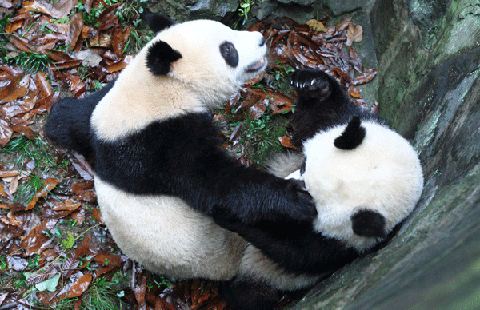Warm hues
Updated: 2014-12-01 14:57
By Sun Yuanqing(China Daily USA)
|
||||||||
NE Tiger was involved in designing garments for leaders and their spouses at this year's APEC summit in Beijing. Sun Yuanqing tells the back story.
While the APEC summit in Beijing ended almost two weeks ago, the style statement surrounding it still lingers. Both online and offline communities in China have since talked about the clothes that President Xi Jinping, foreign leaders and their spouses wore to various events there.
Following the meeting's tradition that started in the United States in 1993, leaders of the Asia-Pacific Economic Cooperation economies, and their spouses, wear attire that is inspired by the host's local culture rather than formal Western suits or national costumes.
|
Embroidery artists from Suzhou, Jiangsu province, work round-the-clock shifts to prepare the attire worn by the leaders and their spouses during the APEC summit held in Beijing earlier this month. Photos Provided to China Daily |
For this year's meeting in China, more than 300 clothing brands and fashion designers were initially invited to make their design pitches for the attire through rounds of selection procedure, but only nine designers were chosen to form a core design team.
Zhang Zhifeng, founder and art director of NE Tiger, was one of them.
But even for Zhang, whose clients range from "European aristocrats to Arabian royals", dressing the APEC leaders and their spouses came as a challenge.
Zhang, who first received the invitation nearly a year ago, prepared two proposals. The first one, inspired by the idea of "harmony in differences", sought to offer different styles to leaders and their spouses, based on flowers.
"Clothes have always been a conveyor of etiquette and philosophies in China. The flowers speak to their differences and help them express themselves," Zhang tells China Daily.
The second proposal, collectively developed by more than 60 Chinese and foreign designers, was based on the Chinese philosophy that peace is the essence of etiquette.
NE Tiger provided more than 100 looks for the initial selection process to a panel of government officials and fashion experts. About 100 craftsmen and women worked on the samples for months.
After the selection was completed, the brand took charge of four looks in womenswear, and all the sleeping gowns.
For the various events at the summit, the ladies were given coat styled after Ming Dynasty (1368-1644) garments and a satin qipao with standup collars, inspired by Qing Dynasty (1644-1911) designs.
The coats and qipao were embroidered with patterns of daffodils, peonies and lotuses, flowers that stand for peace in Chinese culture. Blue, which represents the ocean, and purple, which stands for auspiciousness, were used as main colors for the clothes to illustrate the idea of friendship and prosperity across the Pacific Ocean.
For the sleeping gowns, satin, which is easy on the skin and good for sleep, was used.
One of the biggest challenges was the tight deadline, Zhang says.
Twenty days before the event, only nine sets of ladies' measurements were available to his company, with late measurements arriving only a week prior to APEC's opening.
The label hired 60 top embroidery artists from Suzhou to work with its craftsmen on round-the-clock shifts. Embroideries that were supposed to take 20 days were accomplished in a week.
Measurements for the first ladies of Australia, Pakistan, Brunei and Cambodia were not provided beforehand, so the designers had to make do with their archived visuals. They provided two final versions for each to choose from. All the garments were delivered on Nov 4, one day before the meetings begun.
Although the ladies attire attracted wide attention, selling in the market isn't on Zhang's mind, he says.
"We can customize in terms of style, color and patterns," he says. "For us, it is a rare opportunity."
People could also see how traditional craftsmanship is being revived through such clothes, he adds. "It also helps people know more about indigenous Chinese designs."
His brand was founded in 1982 as a maker of fur clothing and later expanded to evening gowns, wedding dresses and couture creations highlighting traditional Chinese aesthetics and handicrafts.
In 2007, Prince Joachim of Denmark picked a dress from NE Tiger for his then to-be princess. In 2010, a red silk gown, made by seven ancient weaving techniques, was collected from NE Tiger by the Capital Museum.
A NE Tiger silk scarf embroidered with peonies and bamboo leaves was given as a state gift to Denmark's Queen Margrethe II during her official visit to China in April.
Contact the writer at sunyuanqing@chinadaily.com.cn
(China Daily USA 12/01/2014 page9)
Most Viewed
Editor's Picks

|

|

|

|

|

|
Today's Top News
New visas a boon to real estate
China records 497,000 people with HIV/AIDS
Ailing school district seeks Chinese help
Web options proliferate for Chinese shoppers
Artists seek US audiences
Alibaba, Amazon in online battle
HK protesters clash with police outside govt headquarters
Cross-border e-commerce booming
US Weekly

|

|

















